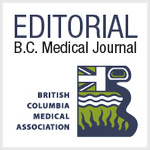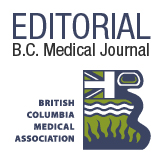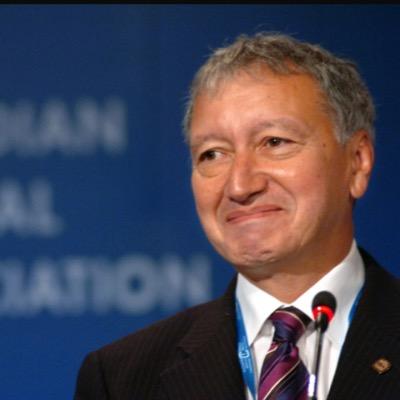
Divided we stand, divided we fall
Apr 01, 2007
BCMA Journal
Volume 49, Number 3, April 2007, page 105-106
Editorial

How many are aware that the five principles of the Canada Health Act are three fewer than were contained in the 1961 Saskatchewan Medical Insurance Act on which the federal legislation was based? It is perhaps telling that the dropped principles were “effective,” “efficient,” and “responsible.” Perhaps if those had been retained, we would have a much better system today. We have a current funding issue in BC that is just one symptom of a sickness that has overcome our health care system.
When faced with a sick patient, we have been trained to take a history, examine the patient, order tests, make a diagnosis, and then prescribe treatment. What happens when we apply these principles in an effort to solve the current dispute between the GPSC and the SSPS? As with most clinical situations, diagnosis can often be made based on history alone.
The beginning of the 1970s was a turning point in Canadian medical-political history. Universal insurance was introduced in Canada and provincial governments began to set fees for physicians. The physician fee guide began to include the government (“MSP”) fee and the BCMA recommended fee (“All Other Billings”). Then, the two fees were substantially the same, but over the years the BCMA rate has been increased to keep pace with inflation (CPI). It is informative to go back just 25 years and recognize how physicians have fallen behind in remuneration. The MSP fee for performing an intramuscular injection was $5.70 in 1982 and is $8.42 today. A consultation with a plastic surgeon paid $45.70 back then, compared with $60.73 today. Some fees have dropped below 1982 levels. Arthroscopic meniscectomy then paid $294, while today the fee is $236.30. To put this in the context of inflation, in 1982 a midsize Buick sold for $8000 ($24 000 today) and a house on a 50-foot lot on the west side of Vancouver cost $110 000 ($1.2 million plus today). Last week our dishwasher broke down and the cost of a home visit for diagnosis alone was $85. If sick dishwashers were covered by medicare, my GP would get paid $64.56. In economic terms, doctors are exposed to a both a free market and inflation regarding expenses, but not with respect to revenues.
Both patients and doctors have become victims of the rationing of resources that is a feature of our current funding system. We are being asked to slice up a pie that is too small. Making that pie bigger can be achieved through reforming the way we fund much of our health care. While this may involve increasing the role of the private sector in physician funding (in Canada 30% of health care is privately funded, but physician remuneration is 99% public), there are also market solutions that can be applied within the public system.
Canada is now the only OECD country that funds our hospitals almost exclusively through block budgets. Service-based funding, or what I prefer to call “patient-focused funding” (PFF), was one of many recommendations of Kirby’s Senate Committee and has been endorsed by the BCMA. The British recently introduced PFF and wait lists have been dramatically reduced. By the end of 2008, they will have achieved their goal of a maximum 18-week wait from first encounter with a family physician through to the completion of definitive treatment by a specialist. In 1997, there were 284 000 patients waiting over 6 months for hospital care in Britain. By 2006, there was none. In Britain, patients may choose from five providers who compete for patients (and doctors) on the basis of service, not price. Fees for all services are calculated and set by government. Doctors and their patients generate income for hospitals and management shifts its emphasis to attracting and retaining physicians. Hospital beds and operating room time are not rationed. Technologies that improve the quality and efficiency of care are embraced. Every hospital admission generates revenue from government. How will PFF help rural practice, mental health, Aboriginal health, and other areas in which PFF may not be directly applicable? Hospitals are by far the biggest cost component of our national health care budget. Many studies, including a joint BCMA-CMA report released last year, show that waiting lists cost governments vast sums of money. Governments lose tax revenue when people are sick and waiting. Injured or sick people who languish on wait lists deteriorate and cost more to treat, in both the short and long term. If we can make hospitals more efficient and productive, and eliminate wait lists, governments will save many billions of dollars. Our hospitals will also be able to generate significant revenue themselves through “medical tourism.” Instead of Canadians going to foreign countries to access care, foreign patients will be able to travel to Canada for treatment, boost our economy, and generate funds to support other Canadian health programs.
Are there enough doctors to provide the services that Canadians need? Probably not, but PFF will certainly help in several ways. For example, it surprises many to learn that in both orthopaedics and neurosurgery, 50% of new graduates leave Canada within 5 years of completion of their training. They leave because they cannot get a job. In 1970, just prior to the introduction of universal health insurance programs, Canada had the second-highest ratio of doctors-to-population of the developed nations. We are now ranked 26th. PFF will also lead to increased efforts to attract back doctors who left in the past, and should stimulate greater efforts to repatriate Canadian-born doctors who have had to go abroad to obtain their medical education.
As our profession’s autonomy has been progressively eroded, we have tended to abandon our role as patient advocates. We have become accustomed to rationing and have tended to accept that delay and deferral are inevitable when we order an investigation, make a referral to a colleague, or try to schedule a procedure. It is time for us to assert our traditional role as a supporter of patient rights and to reject compliance with the status quo. We should not accept the role we have been offered as a gatekeeper without a key to the gate. Arguing among ourselves over the sharing of inadequate resources is futile and plays into the hands of others. It just misses the point.
—BD




